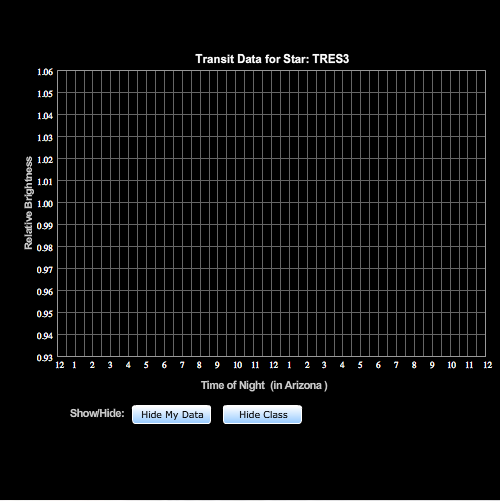Interpreting Your Results

What can you tell about your planet?
It's hard to believe you can say anything about a planet so far away that even the most powerful telescopes in the world can't image it directly.
But you can!
Analyze Your Graph
Discuss With Your Team:
On this graph, you can compare your classes' data with data from other schools looking at the same star.
Can you tell from your graph when the transit occurred? To see when the transit was predicted to occur, press the "Predicted" button. How do your results compare? Would more data help?
Can you tell from the graph how deep the transit was? That is, what fraction of starlight did the planet block as it eclipsed the star? From this fraction, you can figure out how large the planet is, compared to its star.
Can you tell from your graph whether the planet orbited across the whole face of the star, or whether it had a grazing orbit? (Refer to the predictions you made when you used the Orbits Model Lab.)
Sources of Error
To provide convincing evidence, you want to reduce your possible sources of error. Here are some:
- Human error:
View Results




